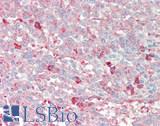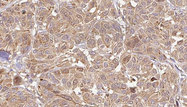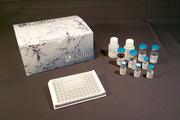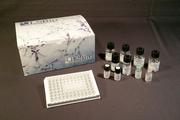Login
Registration enables users to use special features of this website, such as past
order histories, retained contact details for faster checkout, review submissions, and special promotions.
order histories, retained contact details for faster checkout, review submissions, and special promotions.
Forgot password?
Registration enables users to use special features of this website, such as past
order histories, retained contact details for faster checkout, review submissions, and special promotions.
order histories, retained contact details for faster checkout, review submissions, and special promotions.
Quick Order
Products
Antibodies
ELISA and Assay Kits
Research Areas
Infectious Disease
Resources
Purchasing
Reference Material
Contact Us
Locations
Orders Processing,
Shipping & Receiving,
Warehouse
2 Shaker Rd Suites
B001/B101
Shirley, MA 01464
Production Lab
Floor 6, Suite 620
20700 44th Avenue W
Lynnwood, WA 98036
Telephone Numbers
Tel: +1 (206) 374-1102
Fax: +1 (206) 577-4565
Contact Us
Additional Contact Details
Login
Registration enables users to use special features of this website, such as past
order histories, retained contact details for faster checkout, review submissions, and special promotions.
order histories, retained contact details for faster checkout, review submissions, and special promotions.
Forgot password?
Registration enables users to use special features of this website, such as past
order histories, retained contact details for faster checkout, review submissions, and special promotions.
order histories, retained contact details for faster checkout, review submissions, and special promotions.
Quick Order
| Catalog Number | Size | Price |
|---|---|---|
| LS-C104568-25 | 25 µg | $356 |
| LS-C104568-50 | 50 µg | $396 |
Polyclonal Rabbit anti‑Mouse MYDGF / SF20 Antibody (Biotin, WB) LS‑C104568
Polyclonal Rabbit anti‑Mouse MYDGF / SF20 Antibody (Biotin, WB) LS‑C104568
Note: This antibody replaces LS-C39078
Antibody:
MYDGF / SF20 Rabbit anti-Mouse Polyclonal (Biotin) Antibody
Application:
WB, ELISA
Reactivity:
Mouse
Format:
Biotin, Unmodified
Other formats:
Toll Free North America
 206-374-1102
206-374-1102
For Research Use Only
Overview
Antibody:
MYDGF / SF20 Rabbit anti-Mouse Polyclonal (Biotin) Antibody
Application:
WB, ELISA
Reactivity:
Mouse
Format:
Biotin, Unmodified
Other formats:
Specifications
Description
SF20 antibody LS-C104568 is a biotin-conjugated rabbit polyclonal antibody to mouse SF20 (MYDGF). Validated for ELISA and WB.
Target
Mouse MYDGF / SF20
Synonyms
MYDGF | C19orf10 | IL-27 | Interleukin 25 | Interleukin-25 | EUROIMAGE1875335 | IL27w | R33729_1 | SF20 | IL-25 | UPF0556 protein C19orf10
Host
Rabbit
Reactivity
Mouse
(tested or 100% immunogen sequence identity)
Clonality
Polyclonal
Conjugations
Biotin.
Also available Unconjugated.
Purification
Immunoaffinity purified
Modifications
Unmodified
Immunogen
E.coli derived recombinant Murine SF20.
Specificity
Mouse SF20
Applications
- Western blot (0.1 - 0.2 µg/ml)
- ELISA (0.25 - 1 µg/ml)
- Applications tested for the base form of this product only
Usage
ELISA: To detect mSF-20 by direct ELISA (using 100 ul/well antibody solution) a concentration of 0.25-1 ug/ml of this antibody is required. This biotinylated polyclonal antibody, in conjunction with compatible secondary reagents, allows the detection of at least 0.2-0.4 ng/well of recombinant mSF-20. To detect mSF-20 by sandwich ELISA (using 100 ul/well antibody solution) a concentration of 0.25-1 ug/ml of this antibody is required. This biotinylated polyclonal antibody, in conjunction with Polyclonal Anti-Murine SF-20 (LS-C104831) as a capture antibody, allows the detection of at least 0.2-0.4 ng/well of recombinant mSF-20. Western Blot: To detect mSF-20 by Western Blot analysis this antibody can be used at a concentration of 0.1-0.2 ug/ml. Used in conjunction with compatible secondary reagents the detection limit for recombinant mSF-20 is 1.5-3 ng/lane, under either reducing or non-reducing conditions. The applications listed have been tested for the unconjugated form of this product. Other forms have not been tested.
Presentation
Lyophilized from PBS, pH 7.2
Reconstitution
Sterile PBS containing 0.1% BSA
Storage
Store Lyophilized at room temperature up to 1 month; Reconstituted for up to 2 weeks at 2°C to 8°C. Aliquot and freeze at -20°C for long term storage. Avoid freeze/thaw cycles.
Restrictions
For research use only. Intended for use by laboratory professionals.
About MYDGF / SF20
Publications (0)
Customer Reviews (0)
Featured Products
Species:
Human
Applications:
IHC, IHC - Paraffin, Western blot, ELISA
Species:
Human, Mouse, Rat
Applications:
IHC, Western blot, Peptide Enzyme-Linked Immunosorbent Assay
Reactivity:
Human
Range:
15.625-1000 pg/ml
Request SDS/MSDS
To request an SDS/MSDS form for this product, please contact our Technical Support department at:
Technical.Support@LSBio.com
Requested From: United States
Date Requested: 4/25/2024
Date Requested: 4/25/2024













